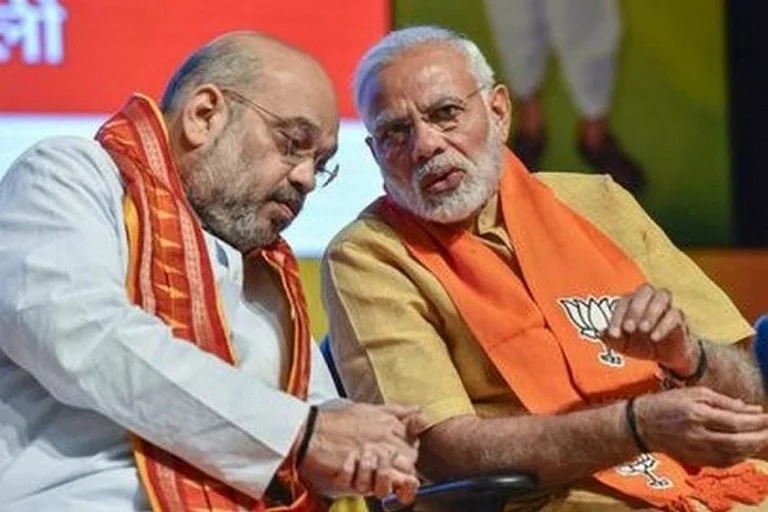With the Barbie movie coming up in theatres, there are videos everywhere of actress Margot Robbie as Barbie. It brought many memories for the upper-class Indians from their childhood. The Barbie doll, often expensive as compared to other dolls made by local brands, is an international brand Mattel creation. Barbies were used by mainly upper-class children to play. Barbie has remained an integral part of childhood memories with almost every third household from upper-class families having one.
Barbies debuted in the American markets in 1959 and entered Indian markets in the 1990s. They remain a part of millennial and gen z childhood experiences where different dolls were used for playing the “ghar ghar” game of household management. Barbies were used to imagine different
scenarios.
How Barbie endorsed gender stereotypes?
One can do a quick search on Amazon and find Barbies, you will see plenty of dolls that are feminine. The Barbie is a thin, able-bodied doll catering to American standards. The Indian version was slightly less fair but contributed to ideal body standards in the mind of young girls. Mattel also introduced Ken doll, a boyfriend of Barbie which shows that probably Barbie is a heterosexual woman. Barbie focuses on maintaining the beauty standards of whichever country’s market they enter with a hint of American standards. The Barbie also came with a dream house, kitchen sets, and closets but rarely any office set-up. It showed that Barbie can only be a homemaker. Sociologically speaking, the Barbie
affected the subconscious minds of young girls so that they can be homemakers but not anything else.
They played with Barbie to cook, go shopping, to clean the house but never to the office. It was in the later stages of the 1990s that Barbie as a doctor and nurse was introduced in the market. Barbie followed social norms of being skinny, having straight hair, and having a light skin tone, and created unrealistic body standards. This could also lead to a higher probability of developing an eating disorder in the teenage and later stages of life.
The BMI of Barbie has been severely underweight. Barbie has always been given to the girl child in Indian societies and other societies at large which led to ingrained views about how women should be. Women undergo objectification and Barbie dolls are a symbol of this objectification with continuous models of Barbies available usually in a sexualized manner. Author Stacey Handler has discussed the body image issues and the struggles that she had due to being ingrained with the body ideals that come with using such toys at a young age in her book, “Body Burden”. She is the granddaughter of Ruth Handler, who created Barbie dolls.
How queer-inclusive is Barbie?
It is also notable that Barbie catered to young girls, anyone else who tried to play with Barbies has been severely mocked and scolded by their parents and peers in most cases. It was seen as hardly ideal that a young boy plays with a Barbie or even a Ken doll. If you were a queer child growing up, a Barbie might not be useful for you. Barbie has always been a cis-heterosexual woman and Ken was her cis-heterosexual partner. In simple words, Barbie was for girls, who were expected to date men, follow gender roles, and stay conformed to beauty standards.
In 1993, Ken doll had some earrings and a necklace and that was the closest to Mattel trying to come associate queerness. It was only in 2019 that Mattel decided to make gender-neutral dolls. These, however, were not available in the large Indian market and catered to the American market. It
remained a distant dream for Indian queer kids to have a queer toy to play with. In Indian society, where little boys are not told to play with dolls, having a non-binary Barbie or a trans-Barbie remains an idea on paper. Society focuses on teaching fixed notions of masculinity and femininity that are challenged by the LGBTQIA+ community’s mere existence. Even if there will be queer models of Barbie available in the Indian market, it might lead to controversy as the Indian society still finds it hard to accept the LGBTQIA+ community as people. It is notable that the marriage equality petition is going on and not only common people but many lawyers and educated people are unable to think beyond the binary of male and female in heterosexual relationships. Barbie and many other gendered toys have led to these mindsets among children from a very young
age.
Many queer children still face bullying as they do not fit into the rigid boxes created by the heteronormative society and this is reflected in not only Barbie dolls but many other toys such as kinder joy which have colour-coded packaging to make toys for boys and girls. Similarly, many parents prefer to buy hot wheels for boys but not for girls. If a child is trans* or non-binary, that child spends a lot of years in the closet trying to fit in due to a lack of acceptance. With the Barbie movie, hitting the theatres and focusing on heterosexual characters, it will further the gendered ideals of society across the world.
As someone who got to play with both Barbies and cars, I believe that toys are not supposed to be gendered. My parents were flexible because I was a girl child for them but if I had been a boy, I do not think I will be able to access dolls like Barbie. I would have been mocked, shamed and told that boys do not play with dolls. Also, a mass part of the market does not focus on toys that would show healthy ideals of masculinity for instance, Ken dolls taking care of a child are not available in the market as the Indian society and other patriarchal societies believe that fathers are supposed to provide money and that is the sole responsibility of theirs as parents. This is something that is been debated in the courts right now about the roles of parents. Barbie dolls are not just a toy, they are a reflection of the markets where they sell.
(Meghna Mehra is the author of the book 'Mini Dictionary Of The LGBTQIA+ Community' and other books. She has a Master's Degree in Political Science, a PG Diploma in women and gender studies and is the founder of AIQA Foundation. Currently, she is pursuing her master's in electoral management from TISS)























